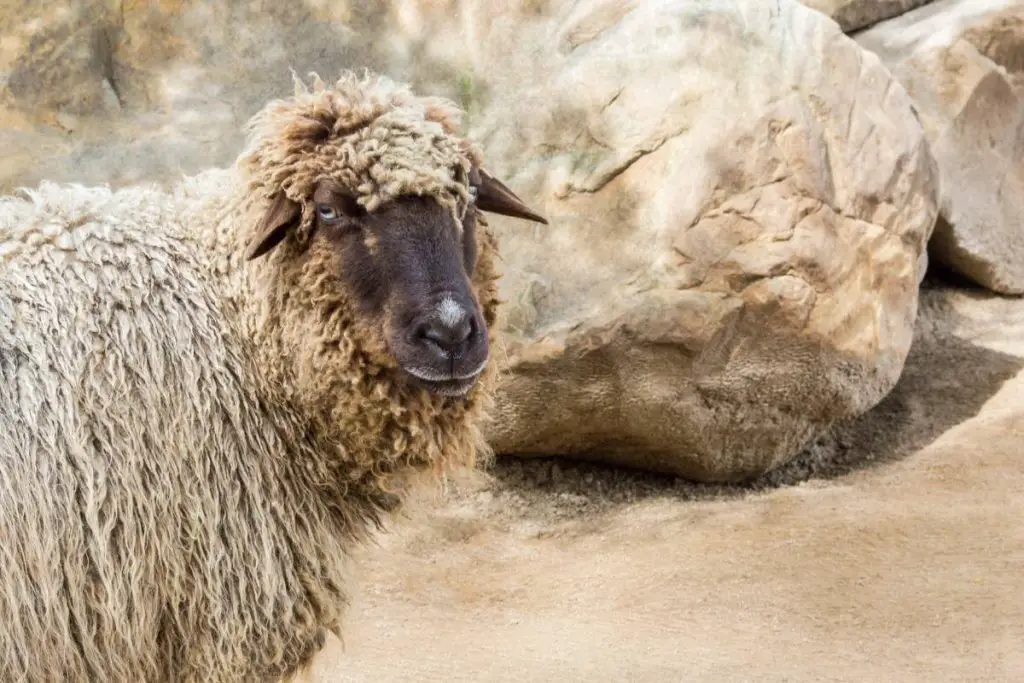A rare breed, the Navajo-Churro sheep breed is hardy and adaptable. It has a long history: it is a descendant of the Churra, an ancient Iberian breed. These sheep and their wool are closely linked to the Navajo people and culture. They are endangered. Organizations like the Navajo Sheep Project are working to preserve them.
Table of Contents
Origin of Navajo-Churro Sheep
Navajo-Churro sheep are descendants of the Churra, the first breed of domesticated sheep in the New World. Spanish settlers prized Churra sheep due to their ability to adapt, endure harsh conditions, and bear offspring.
Churra sheep originally ended up in Spain during the Moorish conquests.
Moors took these sheep with them when they went on raids in Europe. Even after the Moors were defeated, Churra sheep survived.
When the Spaniards started to expand their empire, they brought Churra sheep with them. In the late 1500s, Spanish settlers introduced them to Mexico.
Churra sheep gradually spread to the fertile banks of the Rio Grande. The sheep began to flourish as they were used to feed the mining towns and the increasing population.
The local Navajo people began to use them for livestock and wool. Over time, these Churra sheep developed into a new breed known as the Navajo-Churro.
Characteristics of Navajo-Churro Sheep

| Characteristics | Description |
| Origin | Descended from Spanish Churra sheep; now concentrated in the Southwestern United States |
| Appearance | The rams are distinctive, with four horns. The fleece of has a 3-part outer coat made of a portion of tough and durable kemp, a fine and softer inner coat, and a long, strong outer coat. |
| Wool | Durable, long-lasting, insulative, and water-repelling. Used by weavers and hand-spinners of garments, rugs, and weavings. |
| Meat | Navajo-Churro mutton is prized for its lightness, herbal fragrance, and grassy taste. |
| Environment | Southwestern United States. These sheep are hardy and do well in environments with scarce resources. |
| Common uses | Wool production. Meat production. Milk production. |
| Fertility | Out-of-season breeding cycle. Abundant milk. High lamb survival rate. |
Navajo-Churro sheep are hardy and resistant to diseases like parasites and contagious foot rot. They thrive even with scarce food resources.
Navajo-Churro rams have a striking appearance, with four fully developed horns.
The fleece of a Navajo-Churro sheep is distinct. It has a 3-part outer coat made of a portion of tough and durable kemp, followed by a fine and softer inner coat, and finally a long and strong coat on the outside. Though Churro wool is not as soft as Merino wool, it is more durable, long-lasting, insulative, and water-repelling. It is an indispensable material for weavers and hand-spinners of garments, rugs, and weavings because of its natural colors.
Navajo-Churro sheep are highly intelligent and tough animals, with flocking instincts that make them difficult prey. They have unparalleled memory and instincts, with the ability to differentiate between known and unknown people and farm dogs. They are not as docile as some breeds of sheep.
Fertility of Navajo-Churro Sheep
Navajo-Churro ewes have a strong maternal instinct. They produce milk abundantly and have a high lamb survival rate.
Ewes have an out-of-season breeding cycle and can give birth easily. It is not uncommon for them to have twins and triplets.
Meat Production
Navajo-Churro lambs are antibiotic-free, range-fed, and free from parasites. The meat has low-fat content, as the fat is usually concentrated around the organs instead of throughout the body.
The meat from sheep of 14-16 months old does not have the typical “muttony” smell that other heritage breeds suffer from. Instead, their meat is highly prized for its lightness, herbal fragrance, and grassy taste.
Navajo-Churro sheep are also known for their milk which is rich and creamy, making it perfect for cheeses like the Manchego.
Endangered Species
The Navajo-Churro breed is considered endangered.
Since the 1970s, it has been the mission of the Navajo Sheep Project to ensure that the breed is preserved and kept flourishing. The project uses a systematic conservation program and continues to assist and encourage flocks with various shepherds in the southwest.

